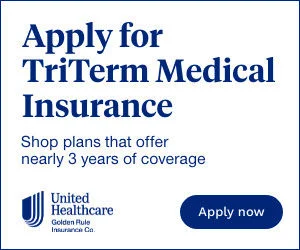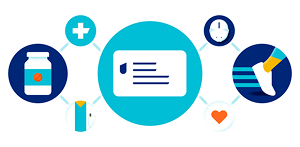Whether it’s first thing in the morning or at the end of the night, brushing your teeth is an important (and healthy) part of your daily routine. Maybe you even get an extra brush in before virtual calls at work.
There’s a reason for all the trouble: About 21% of adults ages 20 to 64 in the U.S. have at least one untreated cavity. And cavities can mean everything from discomfort and inconvenience to drilling and follow-up appointments to your dentist. No thank you.
A great way to promote oral health is by choosing the right toothpaste. But with such a wide variety of options available out there, it can be a little overwhelming trying to decide which one is most appropriate. We’ve done the hard work for you.
Does your health insurance not include dental benefits? A stand-alone dental plan might fit your needs and budget — and help keep your teeth clean in the process. Learn more today.
What should I know about toothpaste?
There’s a lot more to that glob of toothpaste on your brush than you might think. (They can come in gel, paste or powder forms, by the way.) You’ll want your toothpaste to include the following ingredients:
- Fluoride. This is the most important ingredient in toothpaste. It’s a type of mineral that helps prevent tooth decay by strengthening tooth enamel. That’s the hard, white, outer layer of your teeth. It also helps cavity prevention and makes the enamel more resistant to the acid in plaque bacteria and sugars. (Plaque is a sticky, colorless substance that forms on your teeth.)
- Mild abrasives. These ingredients help remove debris and surface stains from the teeth. Your toothbrush pitches in on that process as well.
- Detergent. It’s not the same as the stuff you pour in your washing machine. This type causes your toothpaste to foam up and spread throughout your mouth, cleaning all your teeth.
- Humectants. These ingredients keep your toothpaste from drying out or getting too gummy.
- Flavoring agents. If you like a certain flavor of toothpaste — spearmint or cinnamon, maybe — this is what makes it taste the way it does. Thankfully, these agents don’t contain sugar, so they won’t cause tooth decay.
- Thickening agents. These help keep the toothpaste’s ingredients working together, and they give it its consistency.
Besides plaque, toothpaste can also help fight gingivitis, an early stage of gum disease (more on that below).
And if you’re wondering about the natural toothpaste they sell at the store, you’ll want to find the types that have an American Dental Association (ADA) seal on them. What makes them “natural” is that their makers have removed ingredients like:
- Artificial flavors
- Colors
- Preservatives
- Sweeteners
Also, natural toothpaste may have plant-based active ingredients (that’s what makes it do what it’s supposed to).
Did you know that regular teeth cleanings from a dental health expert may not require you to pay a copay or deductible with dental insurance? Explore dental insurance plans now.
How does toothpaste help my oral health?
All those healthy ingredients add up to some really important ways toothpaste promotes oral health. Here are 4 examples:
1. Toothpaste helps prevent cavities. Cavities are actual holes that form in your teeth because of tooth decay. The acid in certain foods and drinks that contain sugar or starches can make the teeth lose minerals that help them stay strong. If your teeth’s enamel becomes too weak and becomes destroyed, it can lead to a cavity. The fluoride in toothpaste helps protect your teeth from losing those essential minerals. It can even help reverse tooth decay.
2. Toothpaste helps keep your gums healthy. Toothpaste not only helps prevent cavities, it also helps prevent gum disease. Gingivitis is an early stage of periodontitis or gum disease. Signs of gum disease include swelling, redness and bleeding from the gums. There are a range of health issues gum disease can cause, including loosening of the teeth or tooth loss.
Gum disease doesn’t only affect your mouth. Research suggests that it can also increase your risk of diabetes, heart disease, stroke and dementia. (That’s a decline in brain function, including memory, thinking and reasoning, which can affect a person’s day-to-day life.)
3. Toothpaste can help with your sensitive teeth. Your teeth can become sensitive because their enamel gets worn down or your teeth’s roots become exposed. A host of other issues can also cause teeth sensitivity, like:
- A worn filling (that’s a way of fixing a cavity or damaged tooth)
- Cavities
- Cracked or chipped teeth
- Gum disease
Your dentist might recommend something called desensitizing toothpaste to use on your sensitive teeth. This helps block the pain you might feel from them.
4. Toothpaste can help keep your teeth white. Certain “whitening” toothpastes can do just that: make your teeth whiter. That’s with a chemical or polishing agent that helps remove a greater amount of stains from the surface of your teeth than regular toothpaste. If you have sensitive teeth, it’s important to know that teeth whiteners may make your tooth sensitivity worse. It might be a good idea to talk to your dentist before trying it out.
What should I know about kids and toothpaste?
Not all toothpaste is created equal. Dentists, for instance, typically recommend that kids under the age of 2 use fluoride free toothpastes.
On the other hand, kids aged 3 to 6 will want to use fluoride toothpaste — but only a pea-sized amount on their toothbrush. Here are some additional pointers for parents:
- Make sure your kids brush their teeth 2 times a day to prevent cavities.
- Put the toothpaste on a kid’s toothbrush for them.
- Have your child spit out their toothpaste versus swallow it. (Kids under the age of 6 will often swallow it anyway.) If kids swallow their toothpaste on a regular basis, their permanent teeth could end up having white lines or flecks on them.
- For children younger than 6, help them brush their teeth. You’ll need to help them get into all the right nooks and crannies.
What’s the best type of toothpaste for me?
It’s really up to a bunch of factors including your age, level of teeth sensitivity and personal preference. It’s a good idea to read the label and make sure the toothpaste you’re buying has been given a thumbs-up by the ADA. You'll also want it to be free of any harmful ingredients (see the normal ingredient list above).
If you feel like you still don’t have the inside scoop, ask your dentist for a recommendation at your next teeth cleaning. All that time they’re spending in your mouth has its benefits.
Besides using toothpaste, what else can I do to promote dental health?
While you can certainly see any dentist you choose, seeing one once you have dental insurance can potentially save you a lot of money. For one, dental plans help cover oral care treatments like regular dental exams, routine teeth cleanings and dentals X-rays — all of which may be fully covered. It can also help cover things like simple fillings and tooth extractions — or even some types of emergency dental treatment.
If dental insurance isn’t in your budget, another option could be a dental discount program. That’s a type of non-insurance product that can offer you discounted rates on certain dental services at participating dentists.
You can learn more about dental insurance online, or call a licensed insurance agent at 1-844-211-7730 for more information.
For informational purposes only. This information is compiled by UnitedHealthcare, and/or one of its affiliates, and does not diagnose problems or recommend specific treatment. Services and medical technologies referenced herein may not be covered under your plan. Please consult directly with your primary care physician if you need medical advice.
Compliance Code:
52349-X-0625
Sources:
American Academy of Periodontology. “New clinical study suggests effectiveness of new toothpaste in combating gingivitis and plaque – two precursors of periodontitis.” October 11, 2023. Retrieved from https://www.perio.org/press-release/new-clinical-study-suggests-effectiveness-of-new-toothpaste-in-combating-gingivitis-and-plaque-two-precursors-of-periodontitis/
Centers for Disease Control and Prevention. “Oral health facts.” May 15, 2024. Retrieved from https://www.cdc.gov/oral-health/data-research/facts-stats/index.html
Harvard Health Publishing Harvard Medical School. “Rinse, brush, floss, scrape, and repeat.” February 1, 2024. Retrieved from https://www.health.harvard.edu/staying-healthy/rinse-brush-floss-scrape-and-repeat
Mayo Clinic. “What causes sensitive teeth, and how can I treat them?” June 19, 2024. Retrieved from https://www.mayoclinic.org/healthy-lifestyle/adult-health/expert-answers/sensitive-teeth/faq-20057854
Mouthhealthy.org. “Toothpaste.” Retrieved from https://www.mouthhealthy.org/all-topics-a-z/toothpaste Accessed April 23, 2025.
National Institute of Dental and Craniofacial Research. “The tooth decay process: How to reverse it and avoid a cavity.” January 2025. Retrieved from https://www.nidcr.nih.gov/health-info/tooth-decay/more-info/tooth-decay-process#how-does-a-cavity-develop
University of Rochester Medical Center. “Brushing and toothpaste.” Retrieved from https://www.urmc.rochester.edu/encyclopedia/content?contenttypeid=85&contentid=p00872 Accessed April 23, 2025.










